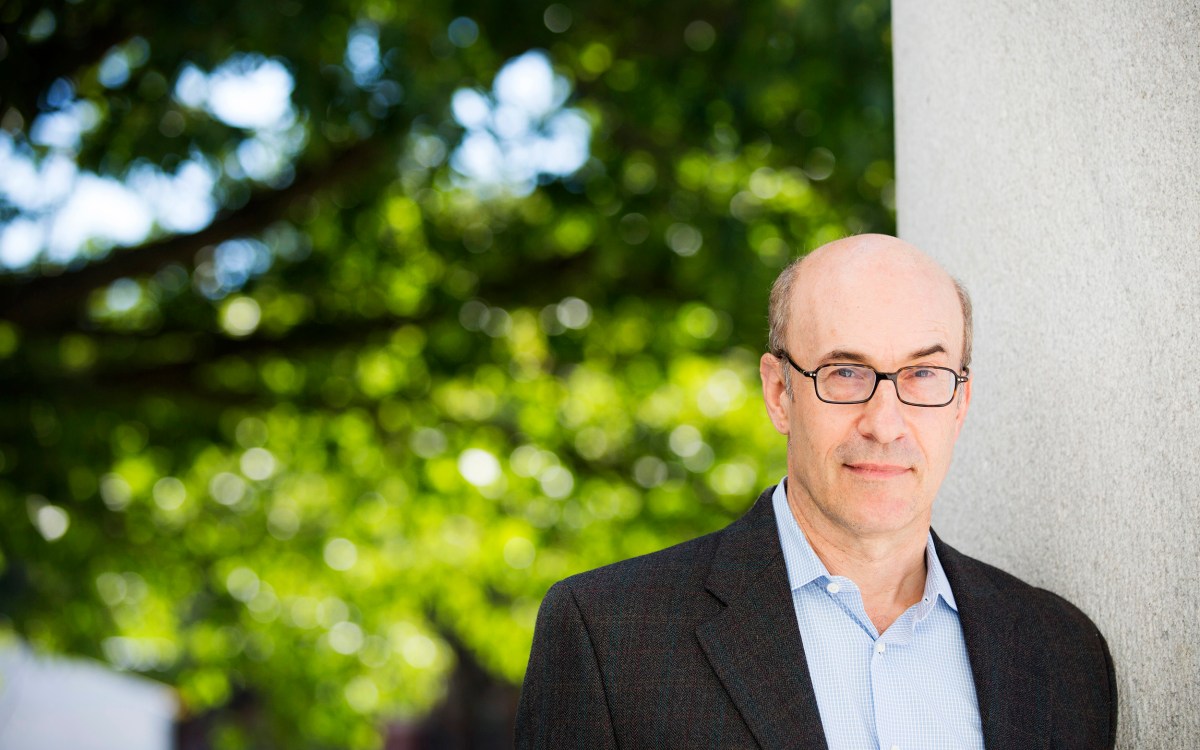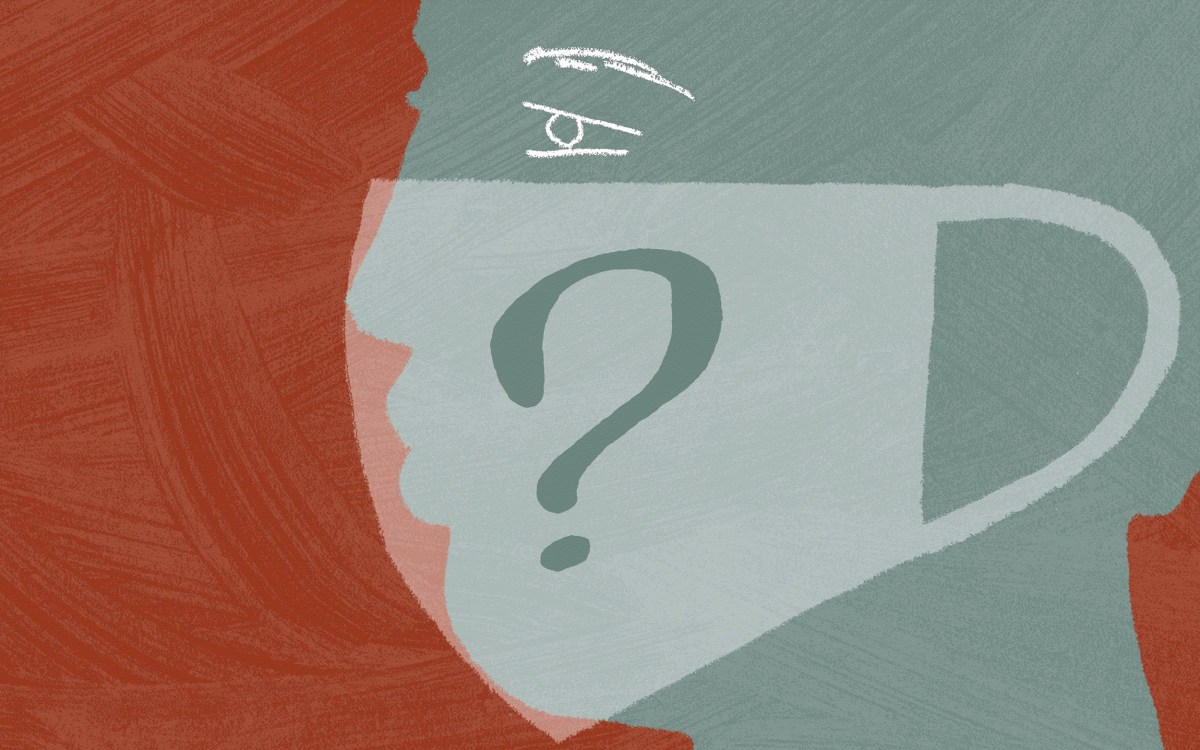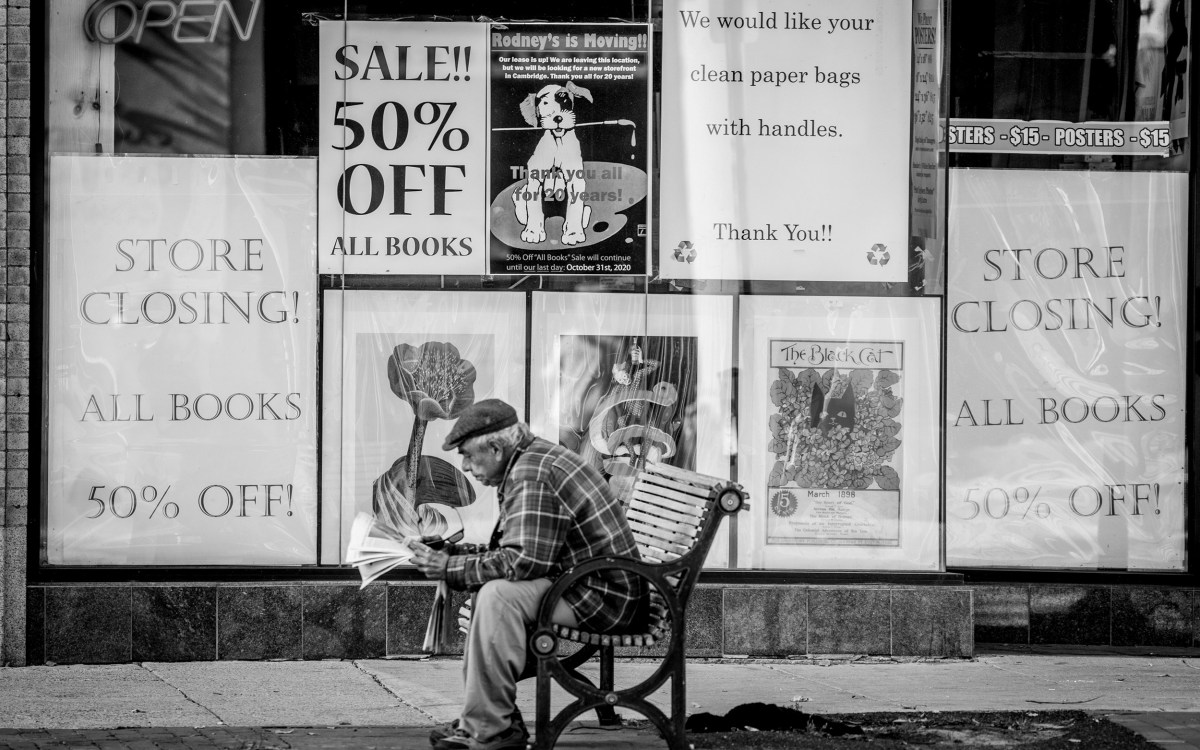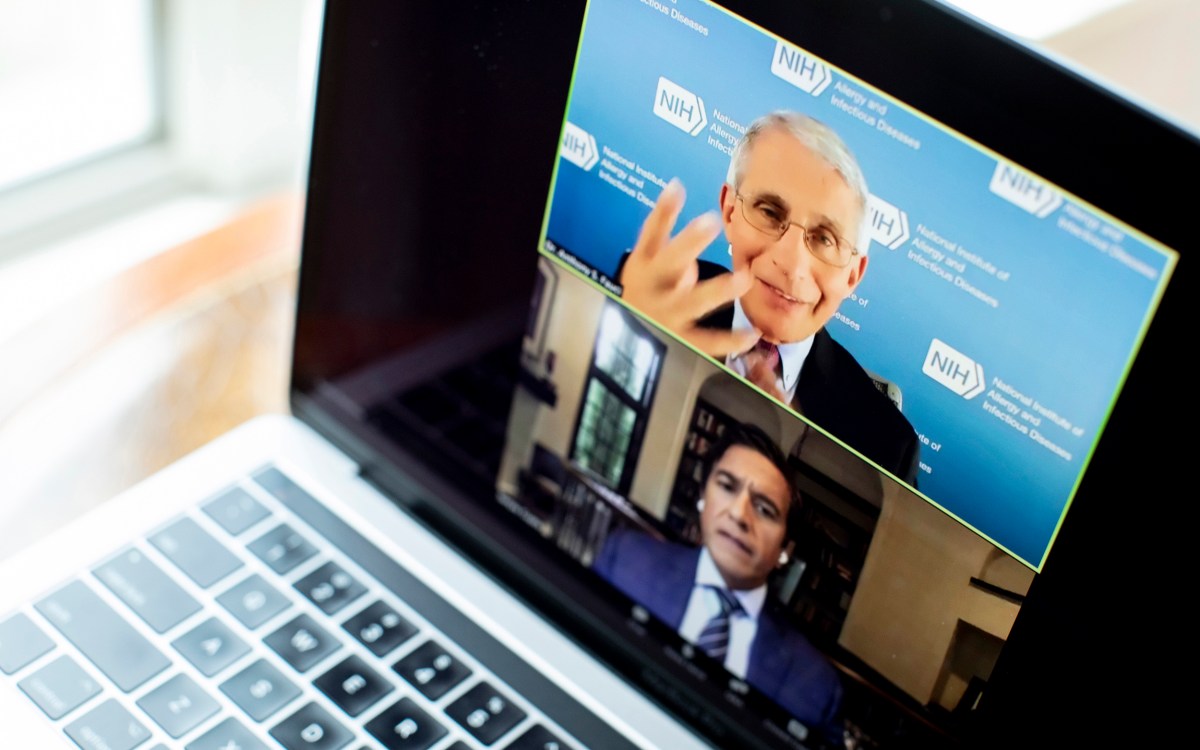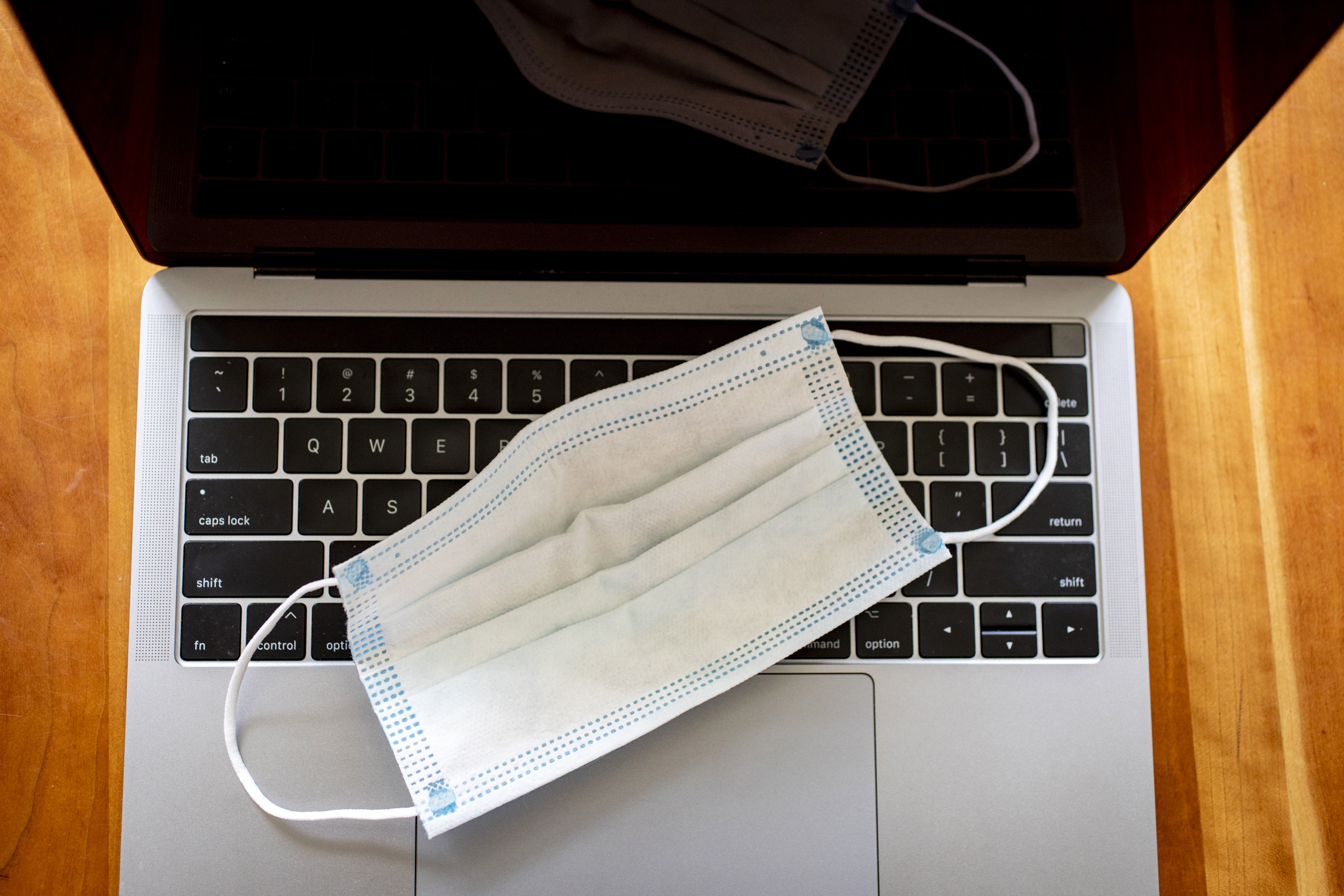
Rose Lincoln/Harvard Staff Photographer
What will the new post-pandemic normal look like?
Outbreak forced changes big and small, some of which are here to stay
Will the wearing of bowties ever rebound with the once-fashion-conscious who’ve grown used to every day being pandemic casual? How about the dollar bill, now that so much spending has gone online and onto plastic? What about doctors’ visits, when the recent past showed that virtual appointments — minus traffic, parking, and schedule juggling — very often do the trick?
The coronavirus pandemic has exerted enormous pressure on American society and forced a host of changes to how we live and work. But those pressures have ebbed and flowed with the outbreak’s progress. When it all recedes in the likely not-too-distant future, experts expect older, more familiar ways of doing things to return, undoing some of the changes we’ve seen since March.
Harvard experts say some of our adaptations have accelerated already existing trends, like the development of a cashless society, the increase in remote work, and the decline of brick-and-mortar retail. And, they expect, some of these will become a more permanent part of the post-pandemic’s “new normal.”
They also say, however, that the most lasting impact may turn out to be one that is invisible: the marking of those coming of age in the pandemic era, much as the Great Depression and World War II marked their generations, with broad but hard-to-predict effects that will affect society for decades to come.
A generation defined?
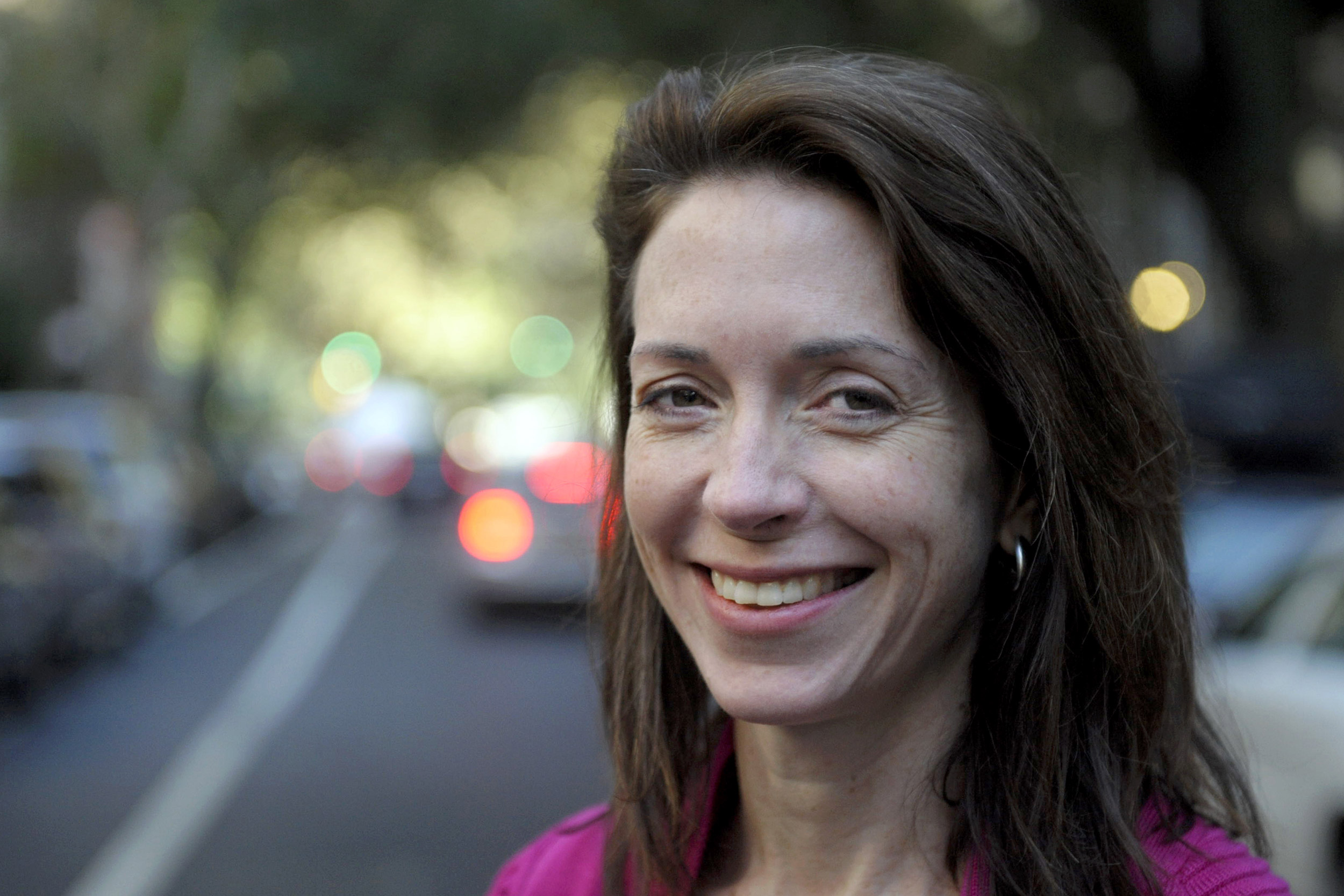
Karestan Koenen, professor of psychiatric epidemiology at the Harvard T.H. Chan School of Public Health, views the effects of the pandemic as both acute and long-lasting, similar to those wrought by economic depression and war. Unlike shocking events that punctuated recent generations — the Kennedy assassination, or the Challenger disaster — the pandemic packs a more enduring punch, affecting nearly every aspect of life with its long duration and widespread personal impacts like the deaths of loved ones and losses of jobs and businesses. The times are particularly difficult for those growing into adulthood and finding their place in the world.
“That ongoing uncertainty takes a big toll. That’s the basis of a traumatic stressor — unpredictability, uncontrollability — until it exceeds the ability of the organism to cope,” Koenen said. “It’s affecting every milestone: graduation, entering school, leaving school. For the older Gen-Zers: marriages, dating, jobs — in fact, there aren’t jobs. That’s a formative period in their lives when people are figuring out: What’s important to me? What do I want my life to look like compared to my parents’ life?”
While it’s likely that the coming-of-age generation will bear long-term impacts, it’s less clear what those might be, Koenen said. Today’s young adults may think of health differently from earlier generations, as more of a common good than something intrinsically personal. If mask-wearing endures, they may not remember a time when not wearing one was acceptable. The pandemic’s traumas could lead to a rise in hopelessness. Physical distancing may accelerate existing trends to connect via social media rather than in person, which, though compensating somewhat for pandemic-induced isolation, may hold its own negative effects.
Younger Americans already exhibit higher levels of anxiety and depression than older generations, and Koenen is concerned that will be exacerbated in the years to come. Harder to measure, Koenen said, is the impact of missed opportunities. One characteristic of youth is a willingness to reach out and try new things, even when those things provoke anxiety. During normal times, initial worries fade as a new skill is learned or with the recognition that something isn’t as bad as feared. Enforced isolation and curtailed activities are effectively swapping new experiences and challenges for time on the couch and on Zoom.
“There are things in our lives that are good to do for our development and those things may provoke anxiety at first,” Koenen said. “What happens if you’re able to avoid normal developmental challenges? What happens when you don’t get those opportunities?”
Working from what office?

For those older and in the workforce, an obvious — and dramatic — change has been how their jobs have been affected. Advances in videoconferencing and other remote technologies have allowed many to continue to produce — and collect a paycheck — working from home.
Though many will eventually return to the office, Tsedal Neeley, Harvard Business School’s Naylor Fitzhugh Professor of Business Administration, said the shutdown highlighted the ease with which modern technology handled the shift from one location to another, as well as the ability of many office workers to get the job done even when not under their manager’s eye. It also showed companies that there may be benefits — like saving money on office space — to the new arrangements.
“I don’t think remote work will be permanent at the scale we saw in March, but I have no doubt that remote work will increase,” said Neeley, whose forthcoming book is “Remote Work Revolution: Succeeding from Anywhere.” “We’re definitely going to see a much bigger population working remotely.”
One function of the shutdown was forcing those unfamiliar with applications like Zoom, Microsoft Teams, and Google Meet to take the plunge and learn. And what many learned is it’s not as hard as they thought.
“What people have feared in the past is the technology aspects of it. And what we have seen is that the technology part is the easiest thing that people have taken up. They’re on Zoom, Slack, Microsoft Teams, and with this ease, the possibilities open up,” Neeley said. “I think that’s what’s going to break this open for many, many people, especially if people in top positions see this is as an effective work format that they can now incorporate as part of their workforce planning.”
Benefits of that shift can accrue both to businesses, whose office overhead has declined, and workers, who are able to maintain a stable financial footing despite the crisis, save time commuting, and keep closer tabs on children. But the change hasn’t been without negative side effects. Spending hours videoconferencing can sap energy, and home workers report fewer social connections and more time alone. Managers say it’s harder to stay engaged with workers. Unanticipated situations have also cropped up, Neeley said, like a company that hired 800 people and brought all of them on board virtually, never having met them face-to-face.
“They said, ‘How on earth are we going to do that?’” Neeley said. “A lot of firsts are happening.”
The repercussions of the shift are potentially far-reaching. Not only has it already transformed the workdays of millions, it could create a self-perpetuating cycle, as more workers become familiar with the virtual tools needed to work remotely and organizations change to accommodate those working out of the office. The move to remote work may also ripple through high-priced commercial real estate markets as companies take advantage of potential savings. Software company Culdesac announced last spring that it is moving workers online and closing its high-priced San Francisco offices. In July, Google announced that those whose functions don’t require them in the office can work from home through July 2021 and, as the pandemic has stretched into the fall, other companies, like Microsoft and Ford Motor Co., have said offices will be closed through next summer. Twitter, meanwhile, has announced permanent remote work as an option for its employees. Its go-slow approach lets workers decide what is right for them, after which the company can reassess its office footprint without alienating staffers.
“All the satisfaction comes when people are given a choice. Choice and autonomy are crucial for people to appreciate remote work and the chance afforded them,” Neeley said.
A tougher nut to crack
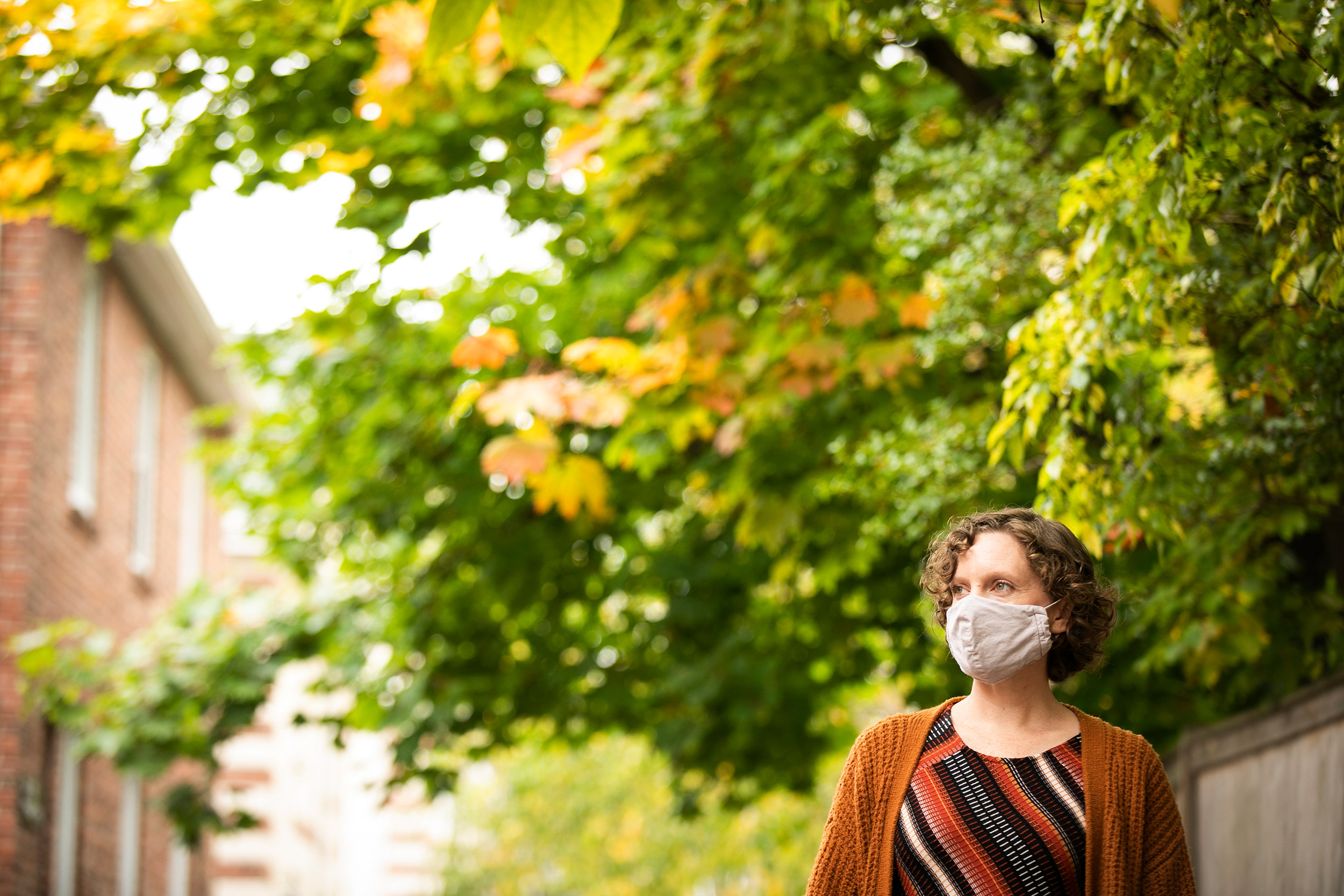
While related to office occupancy, city center traffic may be a tougher nut to crack, according to Carole Voulgaris, assistant professor of urban planning at the Harvard Graduate School of Design. One widely appreciated effect of the shutdown has been the ease of navigating roadways, even in parts of the country where traffic congestion is legend.
The deepest traffic reductions were fleeting, and many roads and highways have since seen significant rebounds, according to an August report by the International Bridge, Tunnel and Turnpike Association. Still, the Port Authority of New York and New Jersey reported that traffic remained down 14 percent from pre-pandemic levels — it had dropped 65 percent in April. Similarly, the Ohio Turnpike reported early August traffic still down 15.8 percent after having dropped 50 percent in April. Other locations — the Pennsylvania Turnpike, still down 22.9 percent, and the San Francisco Bay area, 22 percent — reported recoveries that were less dramatic, and Voulgaris said it is likely that each would eventually recover to pre-COVID levels of congestion.
That’s because even though city planners, traffic engineers, and environmental advocates talk about reducing traffic by improving public transportation, adding tolls and other measures, traffic is firmly linked to economic activity. Victory in the battle, she said, likely won’t come from a single step, but rather systemic change — which has so far evaded planners — that allows the economy to grow vigorously without increasing traffic headaches.
“I think it’s helpful to think about what we’re after as decoupling economic activity from congestion rather than just talking about reducing congestion. … I don’t think that during the pandemic we’ve found ways of doing that,” Voulgaris said. “I sometimes joke that it’s actually really easy to reduce congestion if you just sabotage the local economy.”
Voulgaris acknowledged that the traffic slowdown has created an opening for other modes to expand. Some cities allocated roadway to bikes, pedestrians, and other alternate ways of getting around and, though Voulgaris expects many of those changes to be reversed, some — like Boston’s decision to retain new bike lanes around its Common and Public Gardens — may become permanent.
Cycling is one mode — in a compact city like Boston, anyway — that can benefit from rethinking the commute, Voulgaris said. Cyclists have been hitting the streets in force. Boston’s BlueBikes bike-share system announced in early September that it had recorded its highest-ever single-day ridership of more than 14,400 trips. And that could make roads safer for bikers by fostering a new understanding of and appreciation for riders among those who’ve tried out urban cycling and then gotten back behind the wheel.
Empty storefronts, but Amazon is booming

Among the names on pandemic’s casualty roll are some familiar to generations of Americans — J.C. Penney, Lord & Taylor, Brooks Brothers, Neiman Marcus, Pier 1, all of which filed for bankruptcy, citing reduced sales due to COVID-19. Online retail giant Amazon, on the other hand, has reported record profits, while electronics seller Best Buy reported increased second-quarter sales due to online purchases driven by home office needs.
Clearly, said Rajiv Lal, the Stanley Roth Sr. Professor of Retailing at Harvard Business School, the COVID crisis has hit different retail sectors differently. Some — mainly online — retailers have weathered the storm well, while others, particularly big-box, brick-and-mortar retailers that were already struggling with online competition, have seen declines accelerate dramatically as customers were locked out of stores.
Mall-based retailers, already part of a decade-long downward trend, are in serious trouble, Lal said. While they were closed during the shutdown, their customers shopped online, including some who had been uncomfortable buying online. Post-pandemic, Lal said, at least some of them will be more comfortable with the quirks of online shopping, such as buying clothes they can’t try on and having to return things by mail.
“Consumer behavior is moving to accept online shopping at an increasing pace,” Lal said. “I think online retailers are doing a lot of things that will overcome consumer inhibitions.”
For physical stores open during the pandemic, Lal said it’s important that managers create an environment in which consumers feel safe. That might mean digitizing as much of their operations as possible and reducing contact during checkout. Longer-term success may depend on rethinking shopping, offering an in-person, window-shopping type of experience coupled with ordering items online, with the expectation from the start that some will be returned.
“Businesses have to do things where people feel it’s a safe place to shop. The government cannot do that; the businesses themselves have to do this,” Lal said.
Monthly retail numbers show that sales nationally are continuing to recover from the depths of March and April, but also that the pace of recovery has slowed each month since May’s 17.7 percent bounce. That slowing recovery — August sales rose just 0.6 percent over July — likely reflects government stimulus, paycheck protection program loans, and enhanced unemployment benefits running out, Lal said. Without a renewal of those benefits, he said, retailers will face a difficult fall, since cash-strapped consumers may put off purchases until Christmas.
When they do buy, Lal said, the shifting office environment — with so much activity now remote and online — means some clothing categories will suffer more than others. Formalwear in particular has taken a beating.
“What’s the future of ties and bow ties? It’ll be a while until I run into someone wearing a tie or a bow tie,” Lal said. “Formal clothes will get hit hard. Everything related to dressing up will be hit quite significantly.”
It may also be that time is running out on large, department-store-style retailers, Lal said. Their problem is that they sell many similar brands so there aren’t strong incentives to visit in person. In Europe, he said, retailing in the many boutique-style neighborhood stores is healthy, which may bode well for the smaller stores in U.S. city centers that can offer varied merchandise and bring customers back as offerings change.
“A lot of people are predicting bankruptcies for these stores, especially apparel retailers with a lot of merchandise that is not really unique,” Lal said. “I think navigating these short-term, medium-term challenges will be extremely difficult. … A second wave of COVID-19 would be devastating to the retail business.”
Where stuff comes from
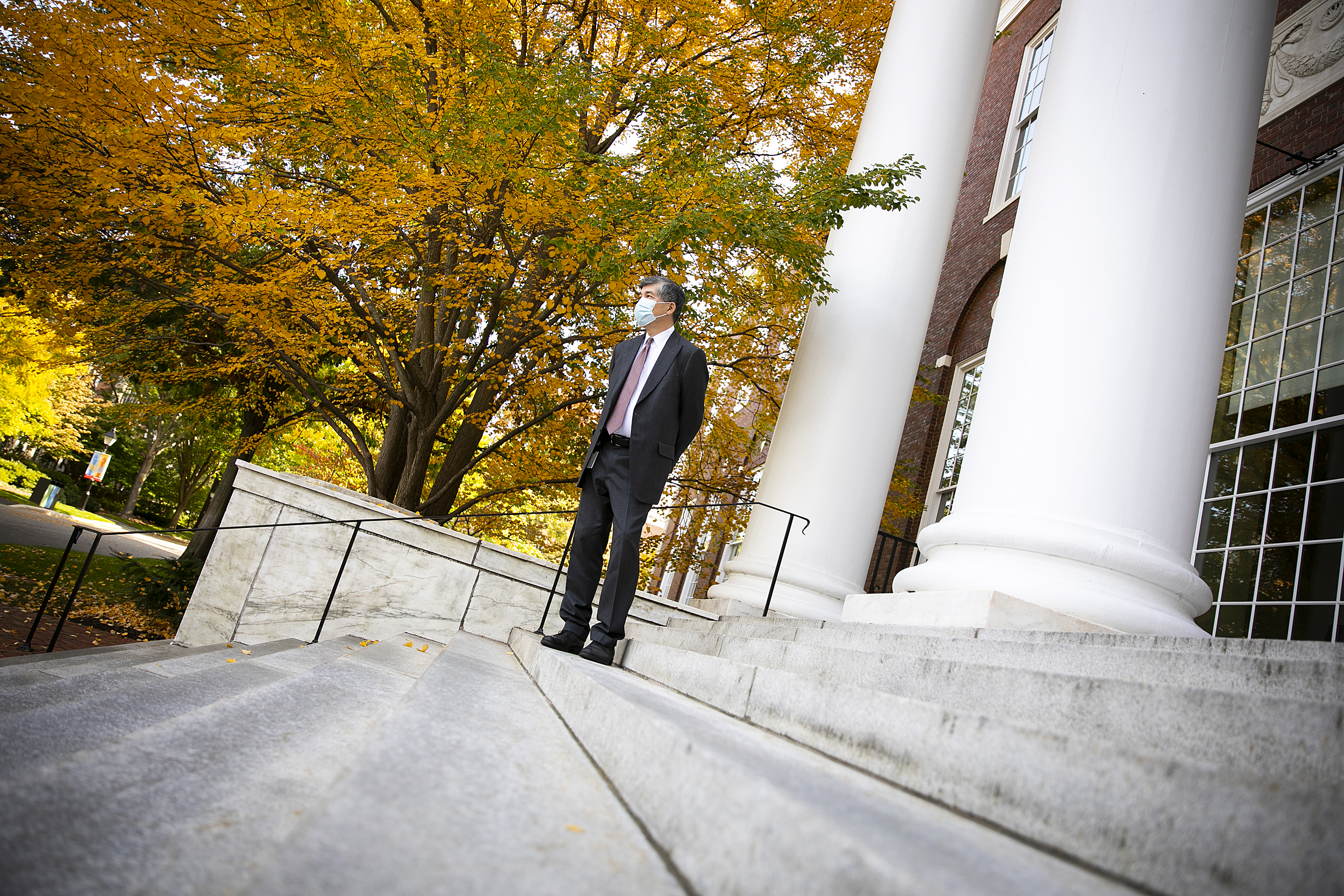
A downside of the globalized economy became clear as the pandemic struck the U.S. and prompted the question: When the whole world wants something, how do you get to the head of the line?
Personal protective equipment, much of which had been made in China, was in short supply last spring. Without it, hospitals and emergency workers were forced to scramble, innovating new designs and homemade alternatives that drew on volunteer labor, 3D printers, ingenuity, and more than a little desperation.
The spring’s shortages were blamed on the globalized economic system and the decline in U.S. manufacturing, exacerbated by a failure of foresight that anything could simultaneously halt the entire globe’s manufacturing, air cargo, and ocean shipping businesses.
Willy Shih, Harvard Business School’s Robert and Jane Cizik Professor of Management Practice in Business Administration, has heard the calls to dismantle the global manufacturing system. He’s heard arguments for “re-shoring” production and stockpiling key products and parts so that the shortages caused by the pandemic across an array of industries doesn’t happen again.
“We’ve been teaching people to run tight inventory and be efficient, but that depends on everything working,” Shih said. “We never envisioned such a major disruption of air cargo. We never envisioned so many ‘blanked’ ocean sailings. Then the lack of inventory starts to bite the other way.”
While Shih is sympathetic to the notion that building up inventory and moving manufacturing home would be protective, he’s also skeptical. The cheap labor and reduced manufacturing costs that drove production overseas in the first place haven’t changed. In fact, he said, an argument could be made that with the global economic downturn, they are a greater draw than ever, with millions out of work and short on money.
“You can do those things, but it better not cost more because consumers won’t be willing — or necessarily able — to pay those costs,” Shih said. “Those things [re-shoring and low costs] are in direct contradiction now. That’s what’s so interesting.”
Even if manufacturers of items like essential medical equipment are brought home, Shih said the problem isn’t solved. Demand as the pandemic struck likely outstripped production capacity anywhere — or everywhere — by more than 20 times for products like N95 medical masks. No manufacturer would build a factory with that much surge capacity in order to let it sit idle, awaiting the next pandemic. If that’s the goal, he said, the government would have to commit to purchasing excess products, perhaps for a national stockpile, to make it worth the company’s while to build and maintain the extra capacity.
“If you want resiliency, that costs you something. Will you pay for it?” Shih said. “Now people say ‘Yes, we want resiliency,’ but with the economic downturn people are going to want to save money on food and essentials.”
Shih’s skepticism about economic nationalism shifting a lot of production doesn’t mean changes aren’t ahead. If the global economic collapse showed anything, it is the danger of relying on one major supplier for key products. Some manufacturers, Shih said, may decide to bring home production of essential parts, or to diversify production from one nation to multiple, which Shih called “China plus one” or “China plus two.”
“I see it as a continued evolution,” Shih said. “I think the more lasting changes, especially if the pandemic drags on, is ‘I’m not going to single source, it’s a China plus one or China plus two strategy.’”
Your cash ain’t nothing but trash (someday)
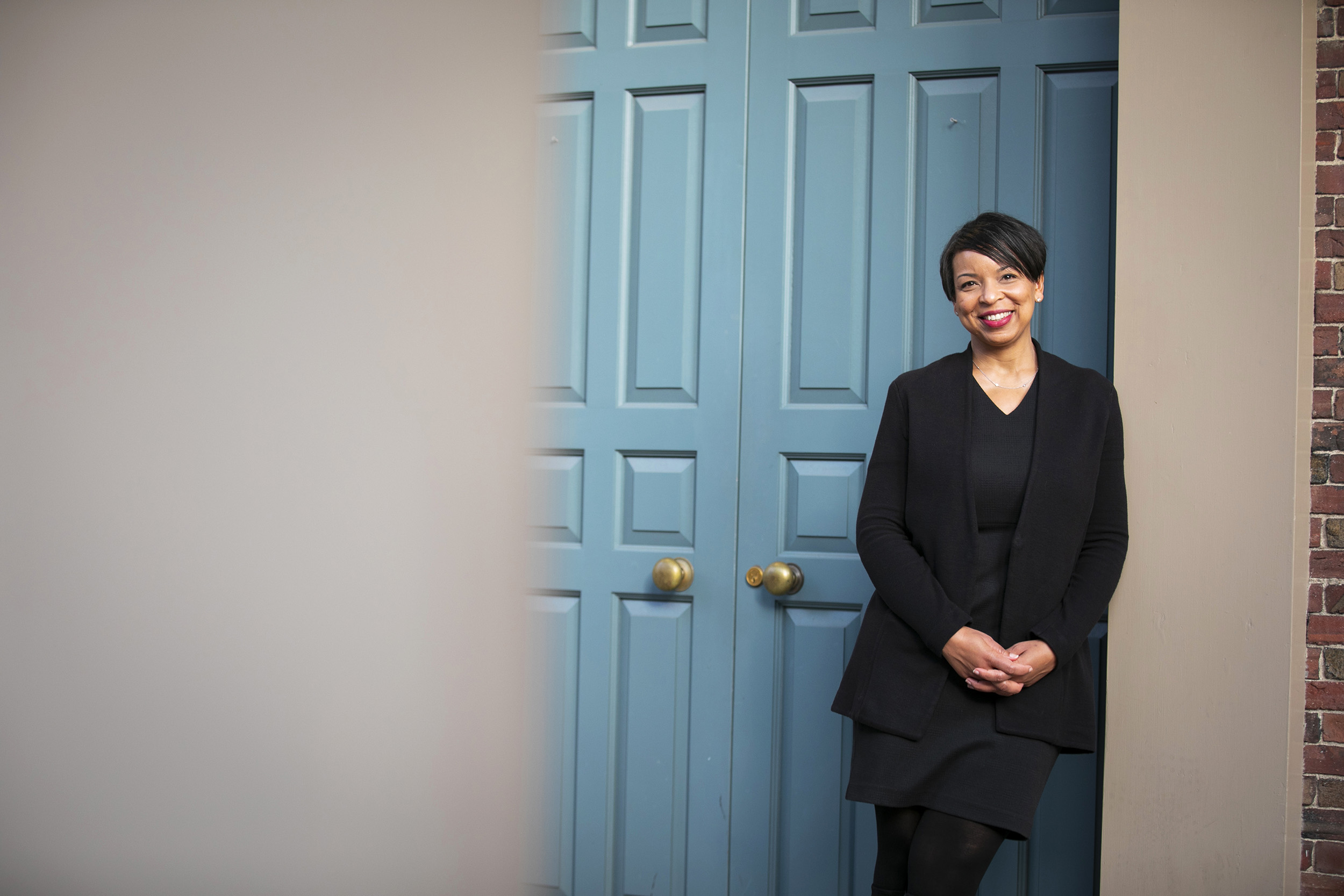
How we pay for all those goods is another shift, as the coronavirus’ pressures can be felt not only in our paychecks, but on our legal tender as well. The use of cash in financial transactions has long been on the decline, with the FDIC reporting in 2017 that it was used in just 30 percent of all payments, according to an article by Shelle Santana, assistant professor of business administration at Harvard Business School.
According to research by Santana and the online payments processing and financial services company Square, last spring’s shutdown led to an enormous jump in the percentage of U.S. retailers that were effectively cashless, defined as 95 percent or more of all transactions completed via credit, debit, or mobile. On March 1, about 8 percent of U.S. retailers using Square’s payment service were effectively cashless, but by April 23 the number had soared to 31 percent.
Santana and Square economist Felipe Chacon attributed the “crazy” increase directly to the extreme conditions facing consumers: confined to home yet needing to meet basic needs. As with other COVID-driven changes, those proved temporary and the percentage of effectively cashless businesses fell by the middle of June to just under 20 percent.
Santana and Chacon expect the numbers of cashless businesses to roughly track the pandemic, rising and falling according to local conditions. They said the numbers will also be affected by business adaptations that bring customers back through the doors — or to recently installed drive-up windows — where using cash is again an option.
As the pandemic fades, Santana expects a return to a more cash-friendly normal, but not back to where it stood in February. Instead of 8 percent of U.S. businesses being effectively cashless as they were before COVID’s spring disruption, she expects the number to fall to between 12 and 15 percent.
What’s occurring, she said, is that the pandemic is forcing older consumers who came of age when credit cards were used primarily for large purchases or kept unused for emergencies to rethink their plastic habits. It’s making them more comfortable using cards for everyday purchases and even small items like a cup of coffee, something today’s youth already see as no big deal. In 2015, half of Square’s businesses consumers used a credit or debit card for an $8 transaction, while in 2019, half used it for a $4.50 purchase.
Santana and Chacon said that the longer the COVID crisis impacts retail habits — boosting online and digital shopping, hurting in-person stores — the larger the signal that will remain when it leaves. Business owners agree. According to a Square study, 69 percent of small business owners say COVID-19 will accelerate the adoption of cashless transactions. And they now think a cashless society will occur six years earlier — in 13 years — than they did in 2019.
“Pre-COVID, there was no reason to try mobile payment or in-app payment,” Santana said. “A segment of the population is going to stick with that behavior because of ease and habit.”
Telehealth
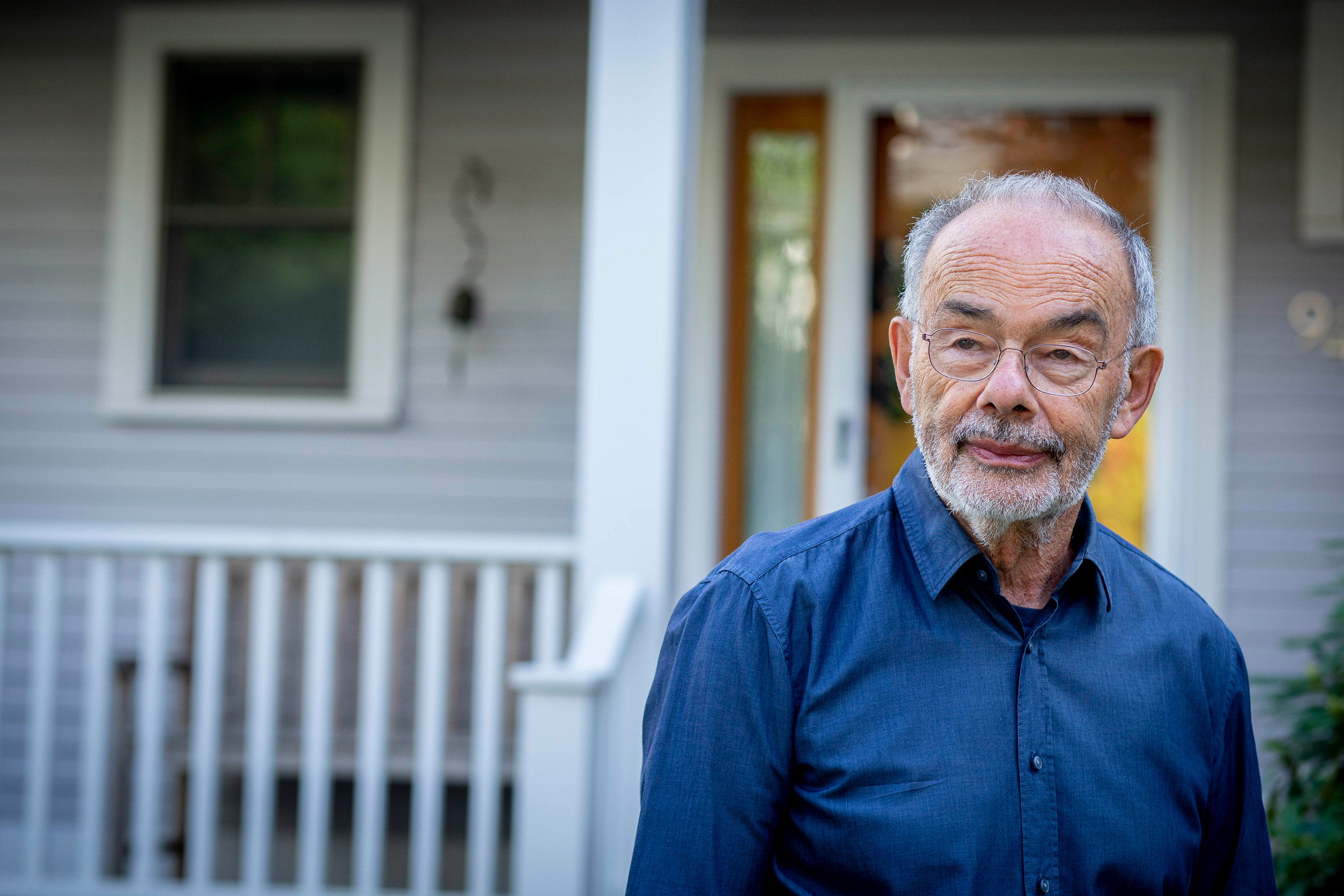
Ease is a factor behind experts’ belief that the recent expansion of telehealth services will be enduring, as is another familiar one: money. Early on in the pandemic, insurance companies agreed to pay for telehealth services as they do for in-person services. The Harvard Chan School’s Koenen said that important change enabled an expansion in telemedicine during the pandemic.
For mental health services, Koenen sees the shift easing access even after the pandemic fades, extending providers’ reach to those reluctant to seek help in person.
Thomas DelBanco, the John F. Keane & Family Professor of Medicine at Harvard Medical School, said the recent surge in doctor appointments via telehealth is decades overdue. Delbanco is a driving force behind the international OpenNotes movement, based at Beth Israel Deaconess Medical Center. OpenNotes encourages patients to review clinicians’ notes after their visits through secure, electronic patient portals. More recently, he’s pushed the adoption of OurNotes, with patients joining their providers in generating the notes themselves. Before a visit, patients send in updates and their goals for the encounter, and these are incorporated into the note itself. In addition, they are asked to provide some of the routine information health aides typically collect at the start of an office visit.
Delbanco said people have been talking about a shift to telemedicine for 20 years, but before COVID, just 7 percent to 8 percent of care was done remotely. Overnight that number jumped to 95 percent, forced by the immediacy of the pandemic — though enabled by years of technological development.
“I think it will become part and parcel of medicine,” Delbanco said. “There are times when doctors, nurses, or therapists really need to see you — no question about it. But there are also times when they really don’t.”



